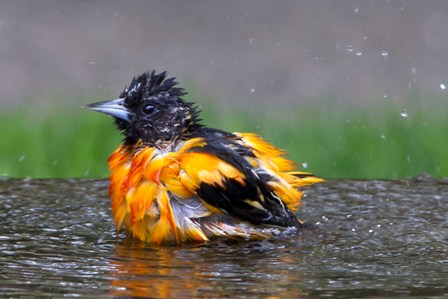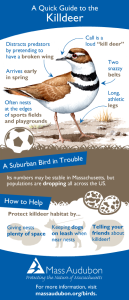
Copyright Sandy Selesky
When it comes to appreciating the four seasons, each one has its advantages. But there’s something about spring—a bright spot at the end of a long, cold winter—that makes it all the more enjoyable. And by being a Mass Audubon member you get free admission to all of our wildlife sanctuaries across the state, not to mention discounts on programs, shop purchases, and more.
So how much do we love spring? Let us count at least 5 of the ways.
Wildflowers
After a bleak, gray winter, the first wildflowers of spring are a much-needed remedy. Spring ephemerals such as trout lily, blue cohosh, red trillium, bloodroot, and marsh marigold provide color and contrast to trails, forests, and meadows.
Wildflowers are blooming and our wildlife sanctuaries, including High Ledges Wildlife Sanctuary in Shelburne, are some of the best places to see them. Before you go, learn about five of the earliest spring blooms.
Birds
Bird migration is upon us. Our wildlife sanctuaries offer these travel-weary birds a welcome resting spot (and plenty of opportunities for bird-watchers to get a glance), especially the bright and colorful bunch of warblers.
Early migrants like the pine, palm, and yellow-rumped warbler arrive as early as mid-April, but the time to see the greatest variety is mid-May, often right around Mother’s Day weekend. If you’re lucky, and the weather conditions are just right, you may even witness a “Warbler Wave”—an explosive fallout of migrants that make local woodlands come alive with song and animation.
Join a naturalist-led bird walk to make sure don’t miss a tweet.
Trails
Now that the weather is warming up and daylight is getting longer each day, you don’t need much of an excuse to get outside. Skip the neighborhood loop and take an easy, moderate, or challenging hike on one of our trails throughout the state. Find a wildlife sanctuary near you!
Baby Animals
Come get your daily dose of cuteness. Watch newborn lambs, kids, and piglets frolicking around Drumlin Farm in Lincoln. At Habitat in Belmont watch the goats munch away invasive species. Princeton’s Wachusett Meadow has it’s own herd of sheep. And thanks to a relationship with local farmers, you can see all sorts of animals at Long Pasture in Barnstable.
Spring New Member Sale
What better way to take advantage of all of the above then by joining Mass Audubon. And now through June 30, new members can save half off a full year of membership. For just $32, you not only get access to all of the above, but your membership dollars help Mass Audubon fund its vital conservation work to protect the land and the wildlife we all enjoy so much.


 When it comes to the status of a particular bird species, it’s not always black and white. Take the killdeer (which happens to be black, brown, and white). At first glance our
When it comes to the status of a particular bird species, it’s not always black and white. Take the killdeer (which happens to be black, brown, and white). At first glance our 